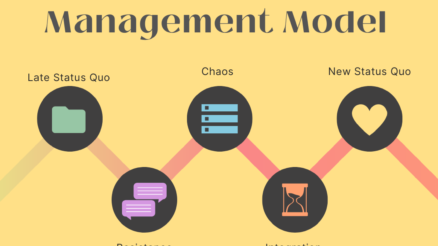Stakeholder engagement is a vital aspect of running a successful business.
In today’s dynamic and interconnected world, organizations must actively involve and communicate with their stakeholders to foster positive relationships, drive innovation, and achieve sustainable growth. However, measuring the effectiveness of stakeholder engagement can be a challenge.
This is where Key Performance Indicators (KPIs) come into play.
Stakeholder engagement KPIs provide a framework for assessing the impact of engagement efforts, identifying areas for improvement, and aligning business goals with stakeholder expectations.
In this blog post, we will delve into the world of stakeholder engagement KPIs, exploring the key metrics that can be used to measure stakeholder satisfaction, involvement, communication, and influence.
By understanding and implementing these KPIs, businesses can enhance their stakeholder relationships and create a foundation for long-term success.
What are key performance indicators?
Key Performance Indicators (KPIs) are measurable metrics that organizations use to evaluate their performance and progress towards achieving specific goals and objectives.
KPIs provide quantitative and qualitative data that reflect the organization’s success in critical areas of its operations, such as sales, marketing, customer service, productivity, efficiency, and financial performance.
KPIs serve as valuable tools for monitoring and assessing performance because they provide a clear and objective way to measure success or identify areas that need improvement.
By defining and tracking KPIs, organizations can gain insights into their overall performance, identify trends, set targets, and make data-driven decisions.
You can further read: A step-by-step guide to develop key performance indicators
Importance of stakeholders engagement in business
Stakeholder engagement is of paramount importance in business for several compelling reasons. Here are some key reasons why stakeholder engagement holds immense significance:
- Building Trust and Relationships: Engaging with stakeholders, including customers, employees, suppliers, investors, and communities, helps build trust and foster positive relationships. By involving stakeholders in decision-making processes and valuing their opinions, businesses demonstrate their commitment to transparency, accountability, and shared interests. This trust and rapport contribute to long-term partnerships and enhance the organization’s reputation.
- Meeting Stakeholder Expectations: Stakeholders have diverse expectations from businesses, ranging from product quality and service reliability to social responsibility and environmental sustainability. Through effective engagement, organizations gain a deep understanding of stakeholder needs, concerns, and aspirations. This insight enables them to align their strategies, products, and operations with stakeholder expectations, ultimately enhancing customer satisfaction, loyalty, and market competitiveness.
- Driving Innovation and Adaptation: Engaged stakeholders offer valuable insights, feedback, and perspectives that can fuel innovation and drive business growth. By involving stakeholders in brainstorming sessions, product development, or process improvement initiatives, organizations can tap into a wealth of knowledge and ideas. Stakeholders, as end-users or beneficiaries, often provide critical input on emerging trends, changing preferences, and evolving market dynamics, helping businesses adapt and stay ahead of the competition.
- Risk Management and Issue Resolution: Engaging with stakeholders proactively helps identify and address potential risks, issues, and concerns before they escalate into crises. Regular communication and dialogue enable businesses to identify emerging challenges, gather early warning signs, and implement preventive measures. Moreover, stakeholder engagement provides a platform to address grievances, resolve conflicts, and mitigate reputational damage by fostering open and transparent communication channels.
- Social and Environmental Impact: Stakeholders increasingly expect businesses to operate responsibly, minimize their environmental footprint, and contribute positively to society. Engaging with stakeholders, including local communities, NGOs, and regulatory bodies, helps businesses understand the social and environmental impacts of their operations. This understanding allows organizations to integrate sustainability practices, support community development initiatives, and align with global goals such as the United Nations Sustainable Development Goals (SDGs).
- Legal and Regulatory Compliance: Engaging stakeholders is not only good business practice but is often required by regulations and laws. Stakeholder engagement can help businesses meet compliance obligations, address legal requirements, and maintain positive relationships with regulators. Engaging with stakeholders also reduces the risk of legal disputes and enables organizations to navigate complex regulatory landscapes more effectively.
Stakeholders Engagement KPIs – Examples
Stakeholder engagement KPIs hold significant importance in the business world as they provide organizations with a structured and measurable framework to assess their interactions and relationships with stakeholders.
By implementing these KPIs, organizations can actively involve stakeholders, understand their expectations, and align their strategies to meet stakeholder needs.
This process helps build trust, foster collaboration, and enhance overall stakeholder satisfaction. Stakeholder engagement KPIs also enable businesses to track and measure the effectiveness of their engagement efforts, identify areas for improvement, and make data-driven decisions.
By prioritizing stakeholder engagement through the lens of KPIs, organizations can achieve sustainable growth, create shared value, and strengthen their position in the market.
KPI 1: Stakeholder Satisfaction
Stakeholder satisfaction refers to the degree to which the expectations, needs, and desires of stakeholders are met by a business or organization.
Stakeholders can include customers, employees, suppliers, investors, communities, and other parties that have a vested interest in the organization’s activities.
Measuring stakeholder satisfaction is crucial because it provides valuable insights into the effectiveness of an organization’s strategies, operations, and interactions with stakeholders.
Satisfied stakeholders are more likely to remain loyal, provide positive feedback, and support the organization’s goals, while dissatisfied stakeholders may withdraw their support, negatively impact the organization’s reputation, or even seek alternatives. Therefore, understanding stakeholder satisfaction and taking action to improve it is essential for maintaining positive relationships and achieving long-term success.
Methods to measure stakeholder satisfaction
There are several methods organizations can employ to measure stakeholder satisfaction. These methods include:
a. Surveys: Surveys are a commonly used tool to gather feedback from stakeholders. They can be conducted through online questionnaires, phone interviews, or in-person interactions. Surveys should be designed to capture relevant information about stakeholder expectations, experiences, and levels of satisfaction. Rating scales, open-ended questions, and Net Promoter Score (NPS) are some techniques that can be used to assess stakeholder satisfaction through surveys.
b. Focus Groups: Focus groups involve gathering a small group of stakeholders to engage in a guided discussion about their experiences and perceptions. This method allows for in-depth qualitative insights and provides an opportunity for stakeholders to share their thoughts, concerns, and suggestions in a collaborative setting.
c. Interviews: Conducting one-on-one interviews with key stakeholders can provide in-depth and personalized feedback. Interviews offer the opportunity to delve deeper into specific areas of interest or concern and allow for a more comprehensive understanding of stakeholder satisfaction.
d. Feedback Channels: Establishing feedback channels, such as suggestion boxes, customer service hotlines, or online platforms, can encourage stakeholders to provide ongoing feedback. These channels should be easily accessible and actively monitored to capture timely feedback and address concerns promptly.
Examples of metrics and indicators for stakeholder satisfaction
When measuring stakeholder satisfaction, organizations can consider a range of metrics and indicators. These may include:
a. Customer Satisfaction Score (CSAT): CSAT is a metric that quantifies the satisfaction levels of customers based on their experiences with a product, service, or interaction with the organization. It typically involves asking customers to rate their satisfaction on a scale or provide feedback on specific aspects of their experience.
b. Net Promoter Score (NPS): NPS measures the likelihood of stakeholders recommending an organization’s product, service, or brand to others. It helps gauge stakeholder loyalty and provides insights into overall satisfaction levels.
KPI 2: Stakeholder Involvement
Stakeholder involvement in decision-making processes is crucial for several reasons. First and foremost, stakeholders often possess valuable insights, expertise, and perspectives that can contribute to informed and well-rounded decision-making.
By including stakeholders in the decision-making process, organizations can tap into a diverse range of knowledge and experiences, which can lead to more innovative and effective solutions.
Moreover, involving stakeholders fosters a sense of ownership and empowerment, as it demonstrates that their opinions and interests are valued.
This, in turn, enhances stakeholder engagement, collaboration, and commitment to the outcomes of the decisions. Additionally, stakeholder involvement promotes transparency and accountability, as it allows for a more inclusive and democratic decision-making approach.
Ways to measure stakeholder involvement
Measuring stakeholder involvement requires assessing the extent to which stakeholders are actively engaged and have meaningful participation in decision-making processes. Here are some ways to measure stakeholder involvement:
a. Participation Levels: Measure the frequency and extent of stakeholder participation in decision-making activities, such as meetings, workshops, or focus groups. This can be quantified by tracking attendance rates or the number of opportunities provided for stakeholder input.
b. Representation: Evaluate the diversity and inclusiveness of stakeholder representation in decision-making forums. Assess whether different stakeholder groups are adequately represented and have an equal opportunity to contribute their perspectives.
c. Feedback and Contributions: Measure the quality and quantity of stakeholder feedback, ideas, and suggestions provided during decision-making processes. This can be assessed by reviewing the nature and relevance of stakeholder contributions and the incorporation of their input into decision outcomes.
d. Collaboration and Partnerships: Assess the level of collaboration and partnerships established with stakeholders. This can include tracking the number of joint initiatives, co-creation projects, or strategic alliances formed with stakeholders to address shared challenges or achieve common goals.
Examples of metrics and indicators for stakeholder involvement:
To measure stakeholder involvement effectively, organizations can consider the following metrics and indicators:
a. Number of Stakeholder Meetings: Track the number of meetings or consultations held with stakeholders to discuss decisions, seek input, or gather feedback. This provides a quantitative measure of stakeholder engagement.
b. Stakeholder Feedback Surveys: Conduct surveys to collect stakeholder feedback on their perception of their involvement in decision-making processes. This can include questions about the level of information provided, opportunities for input, and the impact of stakeholder involvement on decision outcomes.
c. Decision Co-Ownership: Measure the extent to which stakeholders feel a sense of ownership and responsibility for decisions by assessing their willingness to support and implement them.
d. Stakeholder Perception of Influence: Assess stakeholders’ perception of the extent to which their input is considered and acted upon in decision-making processes. This can be measured through surveys or interviews, where stakeholders express their perceived level of influence.
e. Collaboration Index: Develop an index that measures the level of collaboration and partnership established with stakeholders. This can include factors such as the number of joint initiatives, shared resources, or co-development projects.
KPI 3: Stakeholder Communication
Effective communication with stakeholders is essential for building strong relationships, ensuring alignment, and achieving organizational goals.
Clear and transparent communication helps organizations convey their purpose, values, and objectives to stakeholders, fostering understanding and trust.
It enables stakeholders to stay informed about key developments, changes, and opportunities within the organization.
Effective communication also provides a platform for stakeholders to voice their concerns, provide feedback, and contribute their perspectives, creating a sense of inclusion and empowerment.
Furthermore, robust communication practices minimize misunderstandings, resolve conflicts, and address issues promptly, reducing the risk of reputational damage and enhancing stakeholder satisfaction.
Strategies to measure stakeholder communication
Measuring stakeholder communication involves evaluating the quality, frequency, and effectiveness of communication channels and practices. Here are some strategies to measure stakeholder communication:
a. Stakeholder Feedback Surveys: Conduct surveys to assess stakeholders’ perception of communication quality, clarity, and relevance. These surveys can include questions about the accessibility of information, the usefulness of communication channels, and stakeholders’ overall satisfaction with the communication process.
b. Communication Channel Analytics: Utilize analytics tools to track engagement metrics associated with different communication channels. This includes monitoring open rates, click-through rates, and response rates for emails, newsletters, social media posts, and other communication platforms.
c. Communication Audit: Conduct an audit of internal and external communication practices to evaluate their effectiveness. This involves reviewing communication materials, messages, and channels to ensure consistency, relevance, and alignment with stakeholder needs and expectations.
d. Focus Groups or Interviews: Engage in direct conversations with stakeholders through focus groups or interviews to gather qualitative insights into their communication experiences. These discussions can provide valuable feedback on the clarity, effectiveness, and impact of the organization’s communication efforts.
Examples of metrics and indicators for stakeholder communication
To measure stakeholder communication effectively, organizations can consider the following metrics and indicators:
a. Response Time: Measure the time taken to respond to stakeholder inquiries, concerns, or requests for information. This metric reflects the organization’s responsiveness and commitment to open communication.
b. Communication Reach: Assess the extent of communication reach by measuring the number of stakeholders who receive and engage with communication materials or participate in communication events.
c. Stakeholder Satisfaction with Communication: Evaluate stakeholder satisfaction with communication efforts by conducting surveys or using rating scales to assess their perception of communication quality, clarity, and relevance.
d. Engagement Metrics: Track engagement metrics such as likes, shares, comments, or retweets on social media posts, indicating stakeholder interest and engagement with the organization’s communication.
e. Feedback Incorporation: Assess the extent to which stakeholder feedback is incorporated into decision-making processes or action plans. This metric indicates the organization’s commitment to actively listening and responding to stakeholder input.
KPI 4: Stakeholder Influence
Stakeholder influence refers to the ability of stakeholders to impact or shape the decisions, actions, and outcomes of an organization.
Stakeholders can include customers, employees, investors, regulatory bodies, communities, and other parties with a vested interest in the organization. Understanding stakeholder influence is crucial because stakeholders often have the power to affect an organization’s reputation, financial performance, market position, and social license to operate.
Their influence can stem from various factors, such as their level of engagement, expertise, resources, social standing, or legal authority.
By exploring stakeholder influence, organizations can identify key stakeholders who hold significant sway and develop strategies to effectively engage and manage their impact.
Approaches to measure stakeholder influence
Measuring stakeholder influence requires assessing the extent to which stakeholders can shape or impact business outcomes. Here are some approaches to measure stakeholder influence:
a. Power-Interest Grid: Utilize a power-interest grid to categorize stakeholders based on their level of power (influence) and their level of interest in the organization’s activities. This analysis helps identify stakeholders with the highest potential for influence and informs engagement strategies accordingly.
b. Stakeholder Mapping: Conduct stakeholder mapping exercises to identify and assess the influence of stakeholders based on their proximity to decision-making processes, their access to key resources, and their ability to mobilize support or exert pressure on the organization.
c. Stakeholder Perception Surveys: Measure stakeholders’ perceptions of their own influence and their perception of the influence of other stakeholders. Surveys or interviews can be used to capture stakeholders’ perspectives on the extent to which their input is considered, valued, and acted upon in decision-making processes.
d. Key Decision-Maker Identification: Identify the key decision-makers within stakeholder groups who have the authority to shape outcomes and assess their level of influence. This can involve analyzing organizational structures, governance frameworks, or industry dynamics to pinpoint those individuals or entities who hold significant decision-making power.
Examples of metrics and indicators for stakeholder influence
To measure stakeholder influence effectively, organizations can consider the following metrics and indicators:
a. Influence Index: Develop an influence index that assesses the level of influence stakeholders have based on factors such as decision-making power, access to resources, level of support, or legal authority.
b. Stakeholder Alliances: Measure the number and strength of alliances formed with stakeholders to address shared goals or challenges. This metric reflects stakeholders’ willingness to collaborate and their potential influence when working together.
c. Media Mentions: Track the frequency and tone of media mentions related to stakeholders. Positive or negative media coverage can indicate the level of influence stakeholders hold and the impact they have on the organization’s reputation.
d. Stakeholder Engagement Levels: Measure the level of engagement and active participation of stakeholders in organizational activities. This can include metrics such as the number of stakeholder meetings attended, the level of contribution to initiatives, or the support received from stakeholders for organizational goals.
e. Policy or Regulatory Impact: Assess the influence of stakeholders on the development or modification of policies, regulations, or industry standards. This metric demonstrates stakeholders’ ability to shape the external environment and impact the organization’s operating conditions.
Final Words
Stakeholder engagement KPIs play a critical role in measuring and assessing the effectiveness of organizations’ efforts to engage and collaborate with their stakeholders. Stakeholder satisfaction, involvement, communication, and influence are key areas to focus on when evaluating stakeholder engagement. By implementing these KPIs, businesses can cultivate stronger relationships, build trust, and align their strategies with stakeholder expectations. Through effective stakeholder engagement, organizations can drive innovation, manage risks, meet compliance requirements, and create a positive social and environmental impact.



